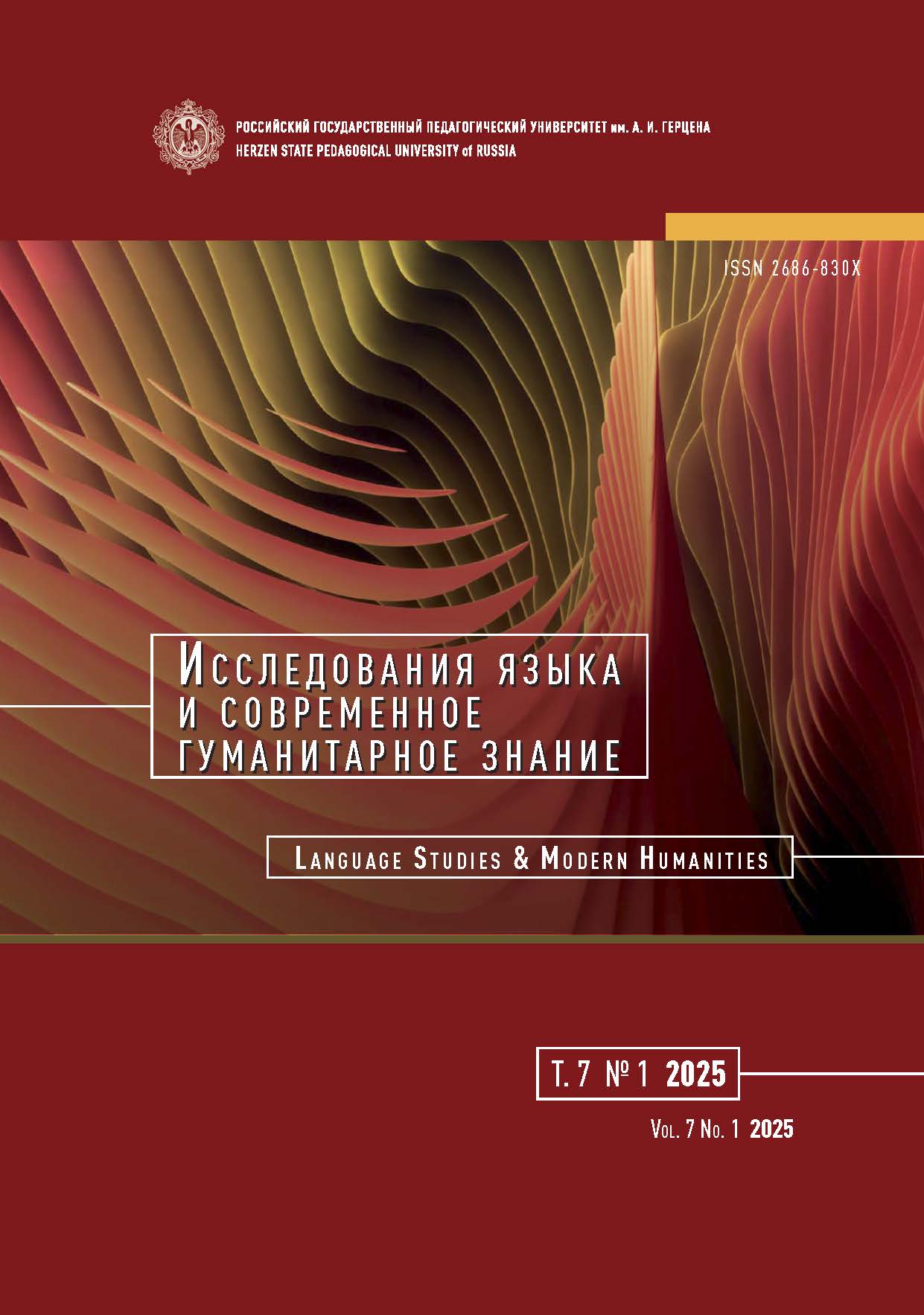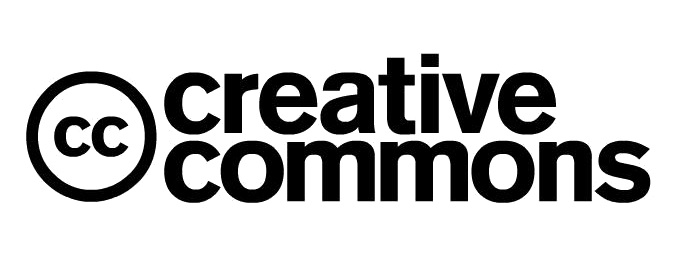Functional potential of grammatical variability in a declarative simple sentence (in English fiction of 1999–2015)
DOI:
https://doi.org/10.33910/2686-830X-2025-7-1-6-18Keywords:
functional potential, grammatical transformation, grammatical variability, sentence pattern, sentence structure schemeAbstract
Grammatical variability is rather well researched in linguistic theory, moreover it is well described in textbooks on English theoretical grammar. However, it is to be remarked that research within the functional and semantic approach, describing the implications which are generated with sentence structural pattern modification, is far from being exhaustive so far. Defining the nature and implications of grammatical variability and describing the routs of the basic sentence pattern modifications, there also arises the issue of determining the structural minimum for constituting the system of the basic sentence structure patterns. In the article present the authors attempt at defining and describing semantic, pragmatic, stylistic implications induced by the minimum simple sentence structure pattern modifications which have been studied in grammar theory. The relevance of the article is perceived as extending the paradigm frames of grammar and applying various functional issues to the matter under study. The research embraces the matter of three modern works of fiction, written in English (A Darker Shade of Magic, V. E. Schwab, 2015; Hannibal, T. Harris, 1999; Capital, J. Lanchester, 2013), which have not been sufficiently studied yet. This also determines the research as novel and relevant, as well as suggests further research into different means of the author’s individual style of fiction. Theoretically, the article dwells upon such issues as the sentence structural minimum, sentence pattern, structural sentence scheme, stereotypical conventional sentence structure meaning, as well as grammatical transformation. The research aims at defining the implications which arise following the transformation of the simple sentence minimum structural pattern.
References
ЛИТЕРАТУРА
Бархударов, Л. С. (1966) Структура простого предложения современного английского языка. М.: Высшая школа, 199 с.
Березина, О. А. (2020) Категория «безличность» в современном английском языке. Диссертация на соискание ученой степени доктора филологических наук. СПб., РГПУ им. А. И. Герцена, 406 с.
Виноградов, В. В. (1986) Русский язык (Грамматическое учение о слове). 3-е изд., испр. М.: Высшая школа, 640 с.
Вишневская, Г. М. (2013) Новые формы существования языка и языковая вариативность: XXI век. Успехи современного естествознания, № 5, с. 121–122.
Власко, Н. К. (2016) Грамматическая вариативность в свете понятия общего ядра. Актуальные проблемы гуманитарных и естественных наук, № 12-2, с. 132–134.
Золотова, Г. А. (1967) О структуре простого предложения в русском языке. Вопросы языкознания, № 6, с. 90–101.
Иванова, И. П., Бурлакова, В. В., Почепцов, Г. Г. (1981) Теоретическая грамматика современного английского языка. М.: Высшая школа, 285 с.
Карпушина, Е. Е. (1992) Грамматическая, прагматическая и интеракциональная вариативность вопросительных конструкций. Автореферат диссертации на соискание ученой степени кандидата филологических наук. СПб., РГПУ им. А. И. Герцена, 17 с.
Картушина, Е. А. (2016) Агрессивная языковая экспрессия и вариативность языковой нормы под влиянием социокультурных факторов. Иностранные языки: лингвистические и методические аспекты, № 36, с. 300–304.
Касевич, В. Б. (1977) Трансформационно-порождающая грамматика. В кн.: Элементы общей лингвистики. М.: Наука, с. 101–113.
Касевич, В. Б. (1992) Субъектность и объектность: проблемы семантики. В кн.: А. В. Бондарко (ред.). Теория функцоинальной грамматики. Субъектность. Объектность. Коммуникативная перспектива высказывания. Определенность/Неопределенность. СПб.: Наука, с. 5–29.
Кирилюк, М. А. (2013) Языковая вариативность в глобализованном мире: немецкие диалекты. В кн.: Перспективы развития науки и образования. М.: АР-Консалт, с. 65–66.
Кузьмина, С. Е. (2015) Простое предложение современного английского языка как средство репрезентации синтаксического концепта. Автореферат диссертации на соискание ученой степени доктора филологических наук. Нижний Новгород, НГЛУ им. Н. А. Добролюбова, 41 с.
Кустова, Г. И. (2024) Грамматическая вариативность в местоименных конструкциях «много кто/что vs. много кого/чего». Труды института русского языка им. В. В. Виноградова, № 2, с. 174–196.
Моисеенко, Л. В. (2017) Языковая норма и вариативность при обучении испанскому языку в России. В кн.: Романистика в эпоху полилингвизма: Материалы международной научно-практической конференции. М.: МГЛУ, с. 360–364.
Пепеляева, Е. А., Попова, О. А., Соболева, О. В. (2023) Грамматическая вариативность в современном русском языке (на материале названий социальных сетей и мессенджеров). Казанская наука, № 7, с. 71–73.
Прокопьева, Н. Н. (2015) Языковая вариативность и проблемы межкультурной коммуникации. Вестник Нижегородского государственного лингвистического университета им. Н. А. Добролюбова, № 30, с. 195–200.
Шведова, Н. Ю. (1973) О соотношении грамматической и семантической структуры предложения. В кн.: Славянское языкознание. М.: АН СССР, с. 458–484.
Юрченко, В. С. (1979) Структура предложения и система синтаксиса. Вопросы языкознания, № 4, с. 77–89.
Bybee, J. (2006) From usage to grammar: The mind’s response to repetition. Language, vol. 82, no. 4, pp. 711–733. https://dx.doi.org/10.1353/lan.2006.0186
Chomsky, N. (1971) Deep structure, surface structure and semantic representation. In: D. D. Steinberg, L. A. Jakobovits (eds.). Semantics: An interdisciplinary reader in philosophy, linguistics and psychology. New York: Cambridge University Press, pp. X–604.
Haegeman, L. (1994) Introduction to Government and Binding Theory. 2nd ed. Oxford: Blackwell Publ., 701 p.
Kapatinski, V. (2013) Conspiring to mean: Experimental and computational evidence for a usage-based harmonic approach to morphophonology. Language, no. 89, pp. 110–148. https://dx.doi.org/10.1353/lan.2013.0003
Kapatinski, V. (2014) What is grammar like? A usage-based constructionist perspective. Theoretical and Computational Morphology: New Trends and Synergies. CSLI Publications, vol. 11, no. 1. [Online]. Available at: https://aclanthology.org/2014.lilt-11.2/ (accessed 20.02.2025).
Langacker, R. W. (1987) Foundations of Cognitive Grammar (in 2 volumes). Vol. 1: Theoretical Prerequisites. Stanford: Stanford University Press, 540 p.
Radford, A. (1990) Syntactic Theory and the Acquisition of English Syntax. Oxford: Basil Blackwell Publ., vii + 311 p.
SOURCES
Harris, T. (1999) Hannibal. New York: Delacorte Press, 484 p. (In English)
Lanchester, J. (2013) Capital. London: Faber and Faber Publ., 592 p. (In English)
Schwab, V. E. (2015) A Darker Shade of Magic. New York: Tor Books Publ., 400 p. (In English)
REFERENCES
Barkhudarov, L. S. (1966) Struktura prostogo predlozheniya sovremennogo anglijskogo yazyka [Structure of a simple sentence in modern English]. Moscow: Vysshaya shkola Publ., 199 p. (In Russian)
Berezina, O. A. (2020) Kategoriya “bezlichnost” v sovremennom anglijskom yazyke [The category of “impersonality” in modern English]. PhD dissertation (Philology). Saint Petersburg, Herzen State Pedagogical University of Russia, 406 p. (In Russian)
Bybee, J. (2006) From usage to grammar: The mind’s response to repetition. Language, vol. 82, no. 4, pp. 711–733. https://dx.doi.org/10.1353/lan.2006.0186 (In English)
Chomsky, N. (1971) Deep structure, surface structure and semantic representation. In: D. D. Steinberg, L. A. Jakobovits (eds.). Semantics: An interdisciplinary reader in philosophy, linguistics and psychology. New York: Cambridge University Press, pp. X–604. (In English)
Haegeman, L. (1994) Introduction to Government and Binding Theory. 2nd ed. Oxford: Blackwell Publ., 701 p. (In English)
Ivanova, I. P., Burlakova, V. V., Pochepchov, G. G. (1981) Teoreticheskaya grammatika sovremennogo anglijskogo yazyka [Theoretical grammar of modern English]. Moscow: Vysshaya shkola Publ., 285 p. (In Russian)
Kapatinski, V. (2013) Conspiring to mean: Experimental and computational evidence for a usage-based harmonic approach to morphophonology. Language, no. 89, pp. 110–148. https://dx.doi.org/10.1353/lan.2013.0003 (In English)
Kapatinski, V. (2014) What is grammar like? A usage-based constructionist perspective. Theoretical and Computational Morphology: New Trends and Synergies. CSLI Publications, vol. 11, no. 1. [Online]. Available at: https://aclanthology.org/2014.lilt-11.2/ (accessed 20.02.2025). (In English)
Karpushina, E. E. (1992) Grammaticheskaya, pragmaticheskaya i interaktsional’naya variativnost’ voprositel’nykh konstruktsiy [Grammatical, pragmatic and interactional variability of interrogative constructions]. Extended abstract of PhD dissertation (Philology). Saint Petersburg, Herzen State Pedagogical University of Russia, 17 p. (In Russian)
Kartushina, E. A. (2016) Agressivnaya yazykovaya ekspressiya i variativnost’ yazykovoj normy pod vliyaniem sotsiokul’turnykh faktorov [Aggressive language expression and variability of the language norm under the influence of sociocultural factors]. Inostrannye yazyki: lingvisticheskie i metodicheskie aspekty [Foreign languages: Linguistic and methodological aspects, no. 36, pp. 300–304. (In Russian)
Kasevich, V. B. (1992) Sub’ektnost’ i ob’ektnost’: problemy semantiki [Subjectivity and objectivity: Problems of semantics]. In: A. V. Bondarko (ed.). Teoriya funktsional’noj grammatiki. Sub’ektnost’. Ob’ektnost’. Kommunikativnaya perspektiva vyskazyvaniya. Opredelennost’/Neopredelennost’ [ Theory of functional grammar. Subjectivity. Objectivity. Communicative perspective of utterance. Certainty/Indefiniteness]. Saint Petersburg: Nauka Publ., pp. 5–29. (In Russian)
Kasevich, V. B. (1977) Transformatsionno-porozhdayushchaya grammatika [Transformational-generative grammar]. In: Elementy obshchey lingvistiki [Elements of General Linguistics]. Moscow: Nauka Publ., pp. 101–113. (In Russian)
Kirilyuk, M. A. (2013) Yazykovaya variativnost’ v globalizovannom mire: nemetskie dialekty [Linguistic variation in a globalized world: German dialects]. In: Perspektivy razvitiya nauki i obrazovaniya [Prospects for the development of science and education]. Moscow: AR-Konsalt Publ., pp. 65–66. (In Russian)
Kustova, G. I. (2014) Grammaticheskaya variativnost’ v mestoimennykh konstruktsiyakh “mnogo kto/chto vs. mnogo kogo/chego” [Grammatical variability in pronominal constructions “many who/what vs. many who/what”]. Trudy instituta russkogo yazyka im. V. V. Vinogradova — Proceedings of the V. V. Vinogradov Institute of the Russian Language], no. 2, pp. 174–195. (In Russian)
Kuzmina, S. E. (2015) Prostoe predlozhenie sovremennogo anglijskogo yazyka kak sredstvo reprezentatsii sintaksicheskogo kontsepta [A simple sentence of modern English as a means of representing a syntactic concept]. Extended abstract of PhD (Philology). Nizhny Novgorod, LUNN, 41 p. (In Russian)
Langacker, R. W. (1987) Foundations of Cognitive Grammar (in 2 volumes). Vol. 1: Theoretical Prerequisites. Stanford: Stanford University Press, 540 p. (In English)
Moiseenko, L. V. (2017) Yazykovaya norma i variativnost’ pri obuchenii ispanskomu yazyku v Rossii [Language norm and variability in teaching Spanish in Russia]. In: Romanistika v epokhu polilingvizma: Materialy mezhdunarodnoj nauchno-prakticheskoj konferentsii [Romance studies in the era of polylingualism: Proceedings of the international scientific and practical conference]. Moscow: MSLU Publ., pp. 360–364. (In Russian)
Pepelyaeva, E. A., Popova, O. A., Soboleva, O. V. (2023) Grammaticheskaya variativnost’ v sovremennom russkom yazyke (na materiale nazvanij sotsial’nykh setej i messendzherov) [Grammatical variability in modern Russian (based on the names of social networks and messengers]. Kazanskaya nauka — Kazan Science, no. 7, pp. 71–73. (In Russian)
Prokopeva, N. N. (2015) Yazykovaya variativnost’ i problemy mezhkul’turnoj kommunikatsii [Language variability and problems of intercultural communication]. Vestnik Nizhegorodskogo gosudarstvennogo lingvisticheskogo universiteta im. N. A. Dobrolyubova — Nizhny Novgorod Linguistics University Bulletin, no. 30, pp. 195–200. (In Russian)
Radford, A. (1990) Syntactic Theory and the Acquisition of English Syntax. Oxford: Basil Blackwell Publ., vii + 311 p. (In English)
Shvedova, N. Yu. (1973) O sootnoshenii grammaticheskoj i semanticheskoj struktury predlozheniya [On the relationship between the grammatical and semantic structure of a sentence]. In: Slavyanskoe yazykoznanie [Slavic linguistics]. Moscow: USSR Academy of Sciences Publ., pp. 458–484. (In Russian)
Vinogradov, V. V. (1986) Grammaticheskoe uchenie o slove. Russkiy yazyk [Russian language (Grammatical doctrine of words)]. 3rd ed., rev. Moscow: Vysshaya shkola Publ., 640 p. (In Russian)
Vishnevskaya, G. M. (2013) Novye formy sushchestvovaniya yazyka i yazykovaya variativnost’: XXI vek [New forms of language existence and linguistic variability: The 21st century]. Uspekhi sovremennogo estestvoznaniya — Advances in Current Natural Sciences, no. 5, pp. 121–122. (In Russian)
Vlasko, N. K. (2016) Grammaticheskaya variativnost’ v svete ponyatiya obshchego yadra [Grammatical variability in light of the concept of a common core]. Aktual’nye problemy gumatinarnykh i estestvennykh nauk — Actual Problems of the Humanities and Natural Sciences, no. 12-2, pp. 132–134. (In Russian)
Yurchenko, V. S. (1979) Struktura predlozheniya i sistema sintaksisa [Sentence structure and syntax system]. Voprosy yazykoznaniya, no. 4, pp. 77–89. (In Russian)
Zolotova, G. A. (1967) O strukture prostogo predlozheniya v russkom yazyke [On the structure of a simple sentence in Russian]. Voprosy yazykoznaniya, no. 6, pp. 90–101. (In Russian)
Downloads
Published
Issue
Section
License
Copyright (c) 2025 Olga A. Berezina, Yulia D. Dikaya

This work is licensed under a Creative Commons Attribution-NonCommercial 4.0 International License.
The work is provided under the terms of the Public Offer and of Creative Commons public license Creative Commons Attribution 4.0 International (CC BY 4.0).
This license permits an unlimited number of users to copy and redistribute the material in any medium or format, and to remix, transform, and build upon the material for any purpose, including commercial use.
This license retains copyright for the authors but allows others to freely distribute, use, and adapt the work, on the mandatory condition that appropriate credit is given. Users must provide a correct link to the original publication in our journal, cite the authors' names, and indicate if any changes were made.
Copyright remains with the authors. The CC BY 4.0 license does not transfer rights to third parties but rather grants users prior permission for use, provided the attribution condition is met. Any use of the work will be governed by the terms of this license.







